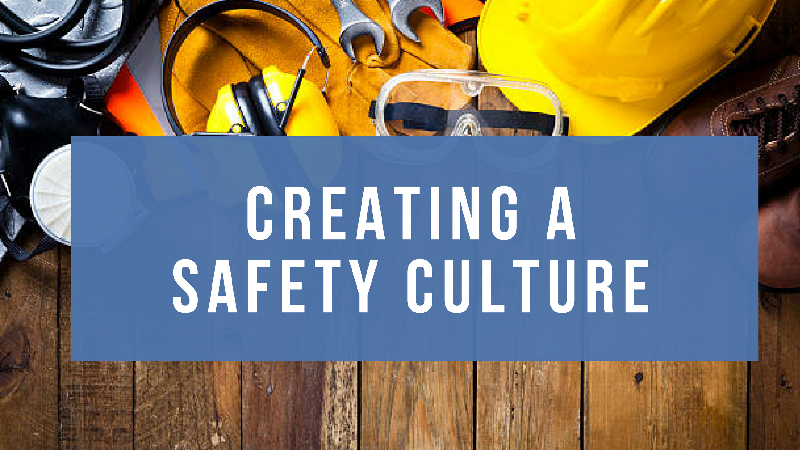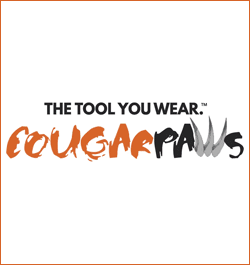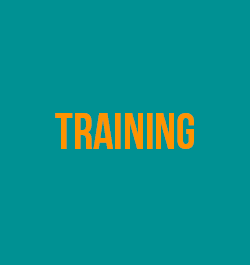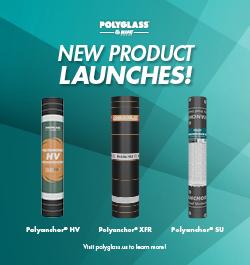Creating a Strong Safety Culture

Tips to reduce workplace accidents by implementing safe policies and procedures.
by Rob Foote, Roofing Risk Advisors, LLC.
According to the Occupational Safety and Health Administration (OSHA), developing a strong safety culture has the single greatest impact on accident reduction of any workplace practice. This is why developing a safety culture should be a top priority for the managers and supervisors at your organization.
Safety Culture
A safety culture consists of shared beliefs, practices and mind-sets that exist at an organization, and form an atmosphere of attitudes that shape behavior in a positive way. An organization’s safety culture is a direct result of the following factors:
- Management and employee norms, assumptions and beliefs
- Management and employee attitudes
- Values, myths and stories
- Policies and procedures
- Supervisor priorities, responsibilities and accountability
- Production and bottom line pressure versus quality issues
- Actions or lack thereof to correct unsafe behaviors
- Employee training and motivation
- Employee involvement and buy-in during the process
A company’s safety culture is a direct reflection of the organization’s overarching culture and the people who work in it. As a result, most employees will generate their perceptions of safety and its importance based on the attitude their employer projects.
The following are four main types of safety cultures commonly held by companies in the United States:
- Forced Culture: A company with a forced safety culture uses bribes and threats as a way to motivate employees to keep safety top of mind. Health and safety officers at these organizations are seen as police-like figures because of their constant need to enforce codes and rules. In addition, employees view these individuals as solely in existence to catch them doing unsafe acts and to punish them. In these cultures, the employees’ fear of being punished is so overwhelming that their performance lacks, creating an unenjoyable work environment.
- Protective Culture: A company with a protective safety culture prescribes a substantial amount of rules and regulations onto their employees. If an employee were to violate one of the rules, this may prompt management to create more rules. This ultimately creates confusion, as there are too many regulating factors in place.
- Involved Culture: A company with an involved safety culture provides an abundance of safety training for employees, with the exception of top management officials. Though morale is higher at organizations with involved cultures because safety officers are not constantly policing employee actions, they also run the risk of not being as safe as they could potentially be. Management should be integrated into the safety culture to make it flourish.
- Integral Culture: A company with an integral safety culture also provides an abundance of safety training for employees and they are attended by individuals at all levels. In these organizations, safety officers have budgets and authority, and enforce rules when appropriate.
In a strong, successful safety culture, the Integral Culture model, everyone feels responsible for safety and pursues it on a daily basis by going beyond the “call of duty” to identify unsafe conditions and behaviors, and to intervene to correct them. In addition, co-workers look out for one another and point out unsafe behaviors to each other. As a result, a company with a strong safety culture typically experiences few at-risk behaviors, and consequently experiences lower accident rates, lower turn-over rates, lower absenteeism and higher productivity.
Promoting a Safety Culture at Your Organization
Use these strategies to develop a culture of safety:
- Develop a site safety vision including key policies, goals, measures, and strategic and operational plans.
- Implement a “buddy system” in which experienced individuals are paired up with newer workers. The experienced workers can serve as role models for newer workers and can demonstrate safe work procedures.
- Encourage all employees to watch out for others. In doing so, develop safety responsibilities for all levels of the organization.
- Align management and supervisors by establishing a shared vision of safety and health goals, and objectives versus production.
- Implement a process that holds management accountable for visibly being involved, setting the proper example, and leading a positive change for safety and health.
- Management should make themselves available during worker orientation and introduction sessions.
- The organization should demonstrate a commitment to employee health and safety by implementing safe work practices and prescribing the mentality that unsafe actions are not tolerated.
- Make health and safety part of workplace communications.
- Encourage workers to report health and safety concerns that they encounter and respond to their concerns in a timely fashion. Also provide multiple paths for employees to bring suggestions, concerns and problems forward.
- Develop a system for tracking and ensuring the timeliness of hazard corrections.
- Ensure that the organization has a system for reporting near-miss accidents, injuries and the need for first aid.
- Promote safety training sessions and host emergency response training.
- Maintain safety equipment and ensure that it is worn properly by employees.
- Revise incentives and disciplinary systems to accommodate safety and health concerns.
Creating an effective safety culture is an integral part of your loss control efforts. Contact Roofing Risk Advisors, a division of Frank H. Furman, Inc. for assistance with your employee safety needs.








-2.png)










Comments
Leave a Reply
Have an account? Login to leave a comment!
Sign In